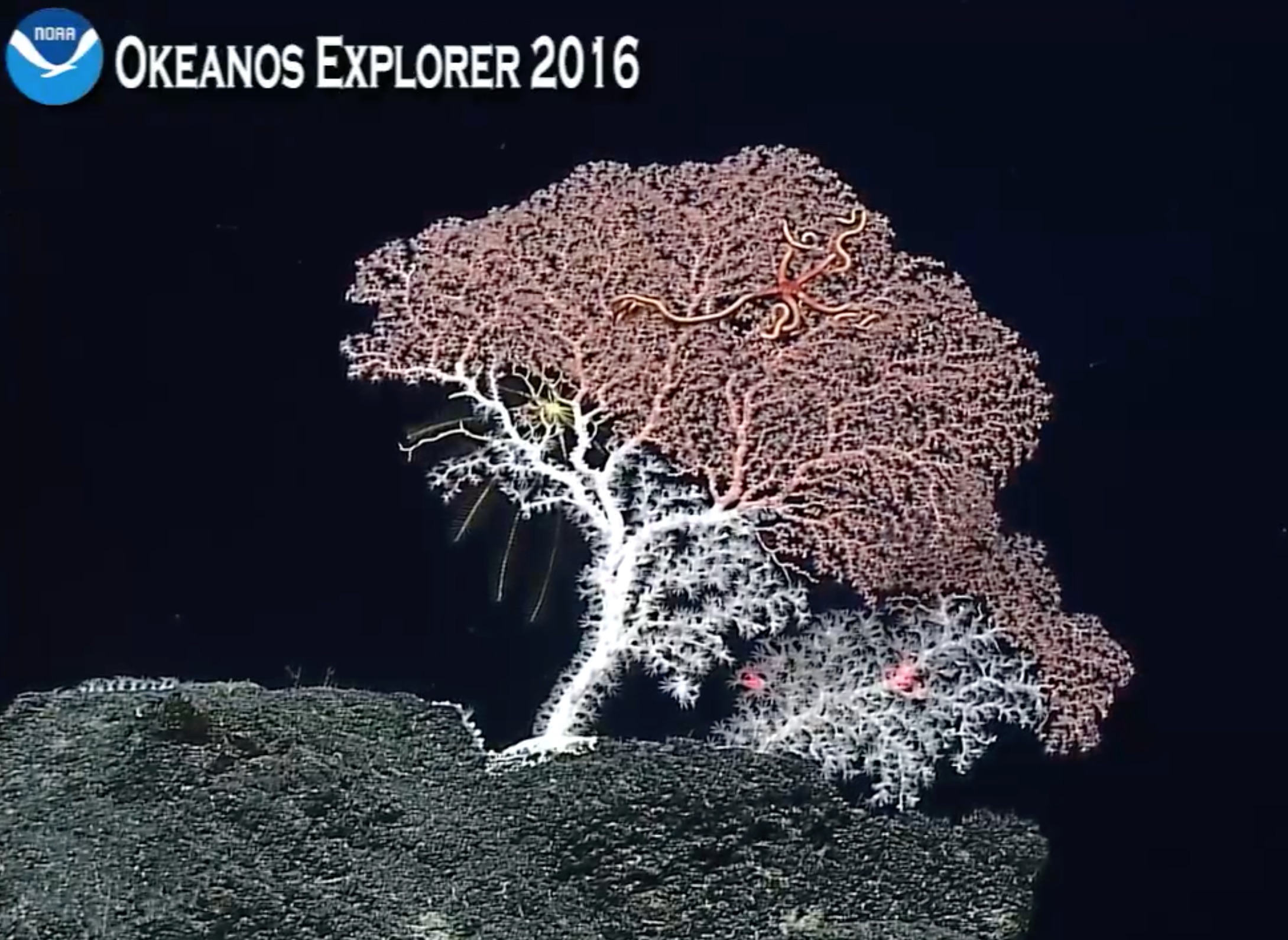The Okeanos Explorer is currently exploring seamounts in the Northern Marians trench. The Expedition is live-streaming on YouTube, and the Okeanos website, we recommend you tune in!
July 5th, Dive: 19
Today’s dive was on the Vogt Guyot. A Guyot is an ancient volcano which over time has eroded into a flat-topped seamount, and this particular location the Vogt Guyot has an average depth at the top of 1750 meters or 5740 feet. The top of the Guyot is covered in a manganese oxide crust which in some places is up to a meter thick, and the crust is scared with large deep cracks as chunks of ground break apart and slope towards the edge of the flat top.

Along the cliff edge of the Guyot, the Okeanos team discovered an oasis of deep sea corals including Pterogorgia sea fans, beautiful spiral Iridogorgia, colonies of Cysogorgias, lots of octocoral sea fans, stalked Metalagorgia corals and this amazing specimen of pink Hemicorallium. The large coral colony was pink at the ends and white at the bottom where it was firmly anchored on the precipice.
After closer inspection, researchers noticed the white polyps at the base of the coral were larger than the pink polyps above and were curious to understand if they were in fact part of the pink Hemicorallium. After repositioning the ROV the front of the wall revealed a ribbon of white Stoloniferous octocoral which had intersected the Hemicorallium and began growing up the base.
This beautiful specimen had everyone excited and the team decided to collect this rare coral combo. At 1750m deep this was sure no easy feat and researchers reminded the ROV pilots of the brittle nature of this precious coral. The skilled pilot was able to navigate into place and plucked the smaller piece of coral from the wall and placed it securely in vehicles side compartments.
Further along the cliff, which was covered in a rich diversity of coral and sponges, the team discovered a white Isidella bamboo coral which was also partially covered by an encrusting yellow zoanthid and behind the Isidella was a larger white bamboo coral anchored to the wall. If you look closely at the images in the gallery below you will notice a zoomed in shot of the thin branching Isidella colony and notice the coral branches originate from the bamboo nodes, while in the larger coral branches originate between grey nodes. Identifying the origin on the branch, either from a node or between nodes is an important question to ask when identifying bamboo coral!

These amazing discoveries and images from the Okeanos Explorer help to show these deep-sea landscapes are not barren, rather they are abundant with a diversity of life. The Okeanos crew reminds us it is important to document these national underwater monuments so that we can wisely manage these rich resources and that this work is especially important in areas where deep sea mining looms on the horizon.



